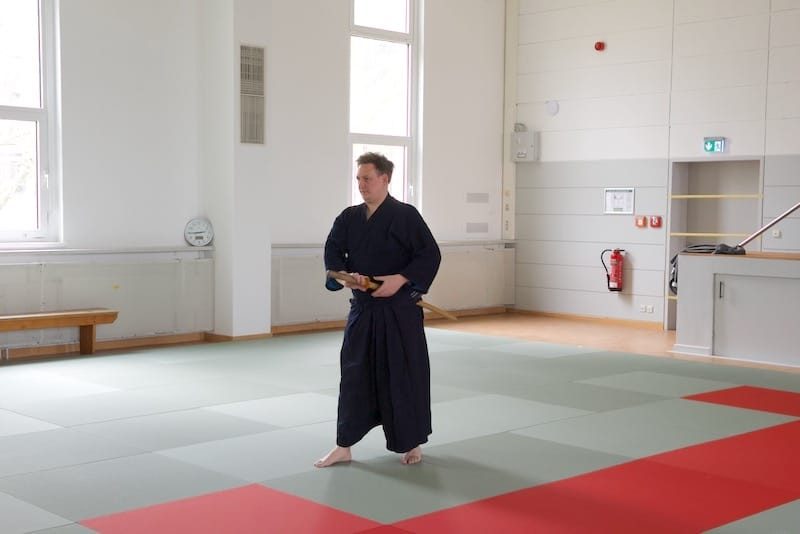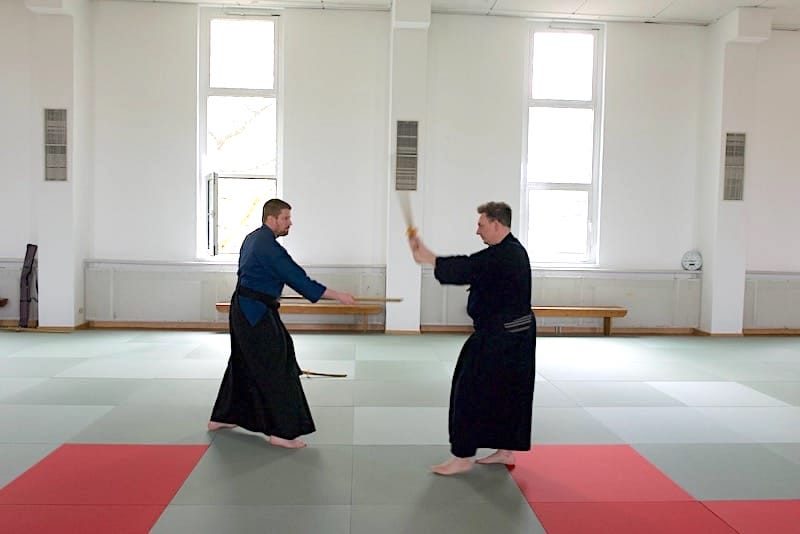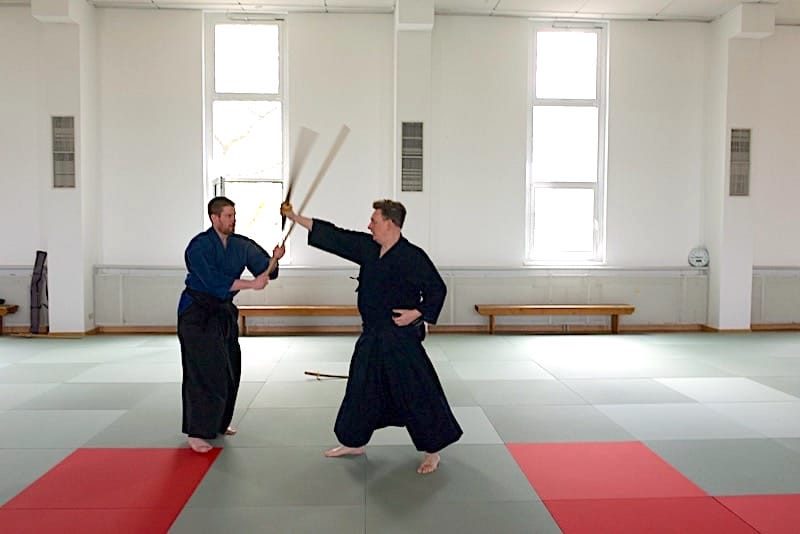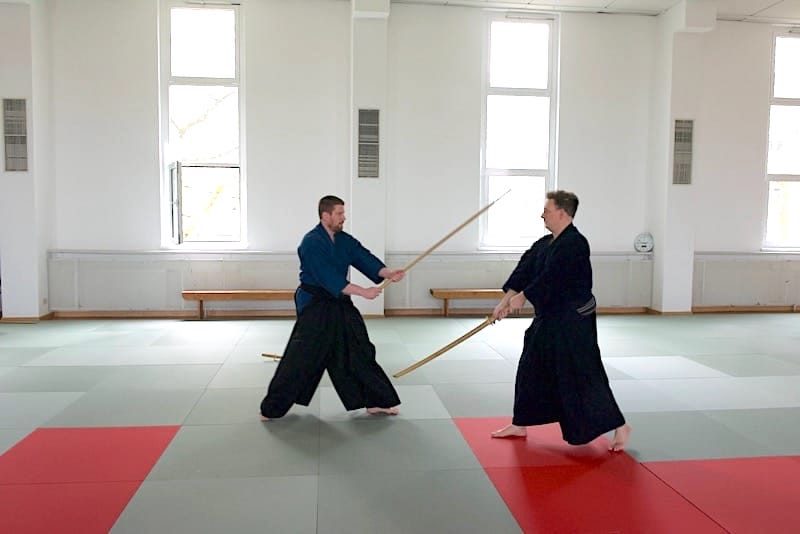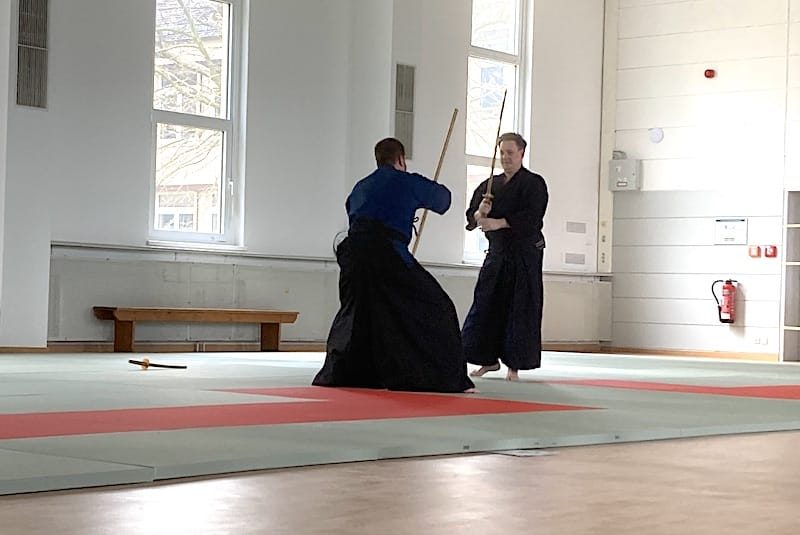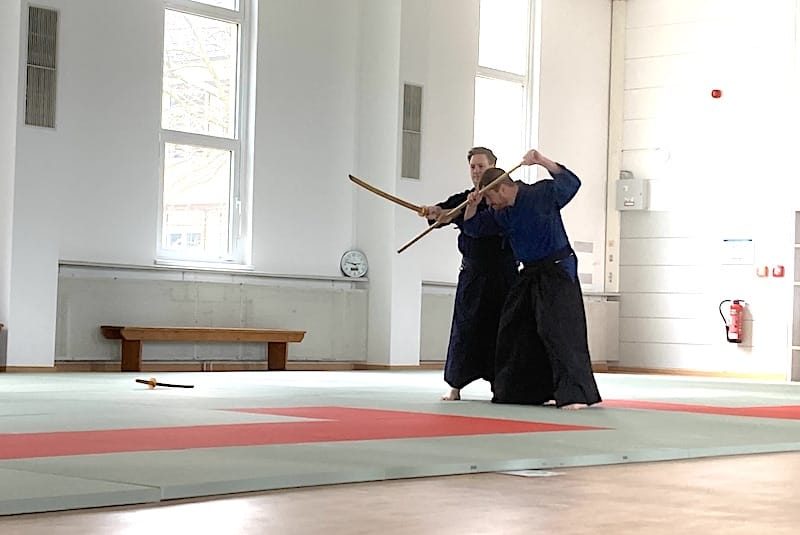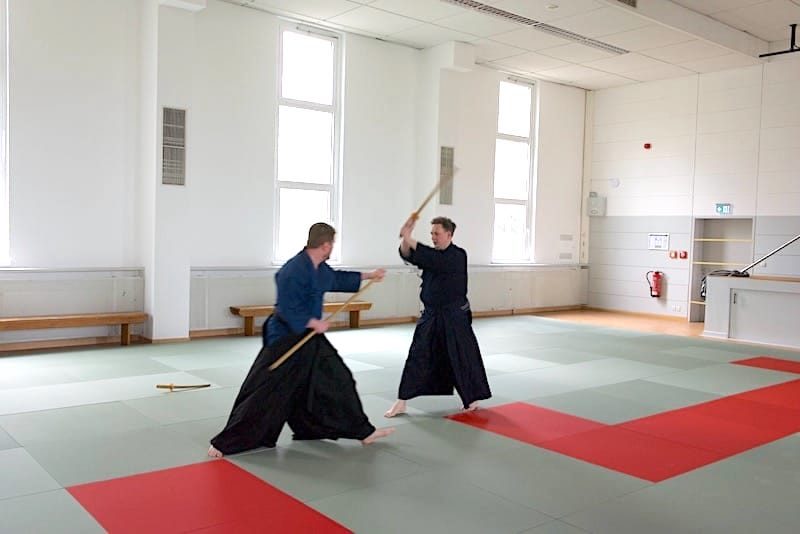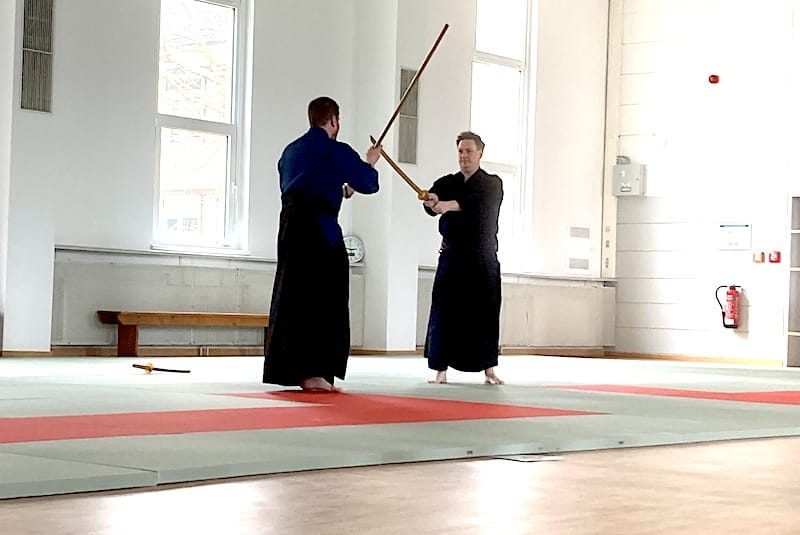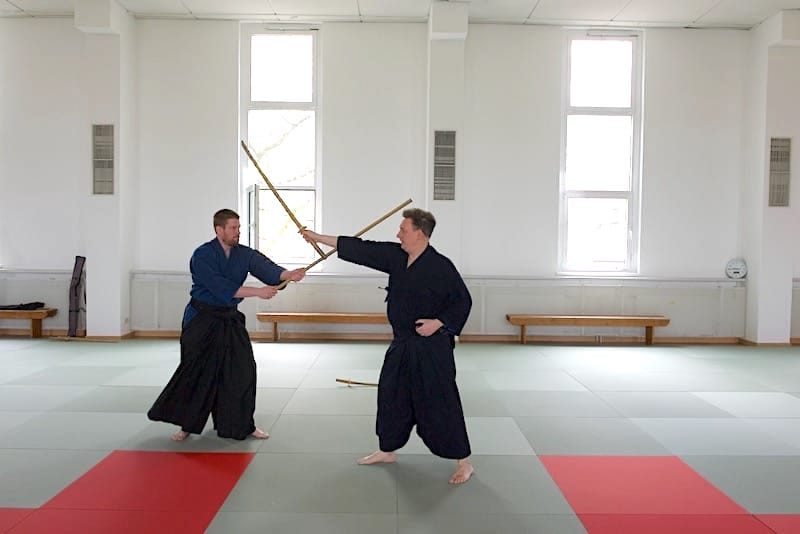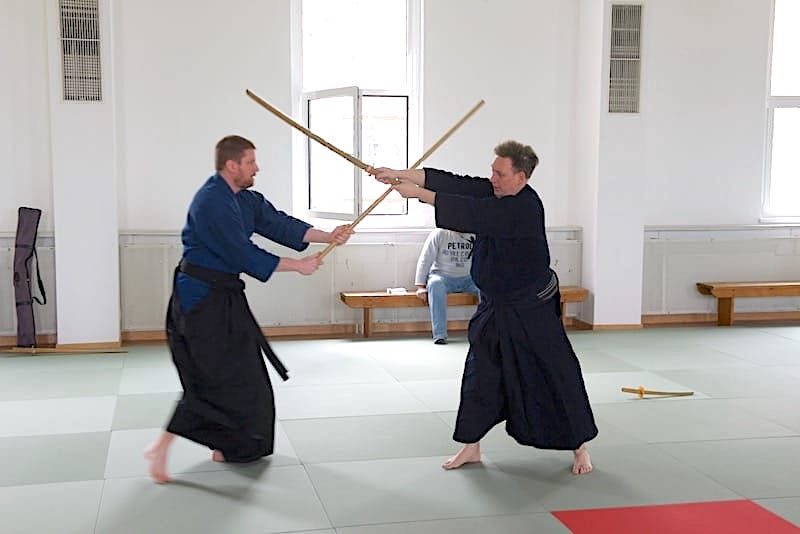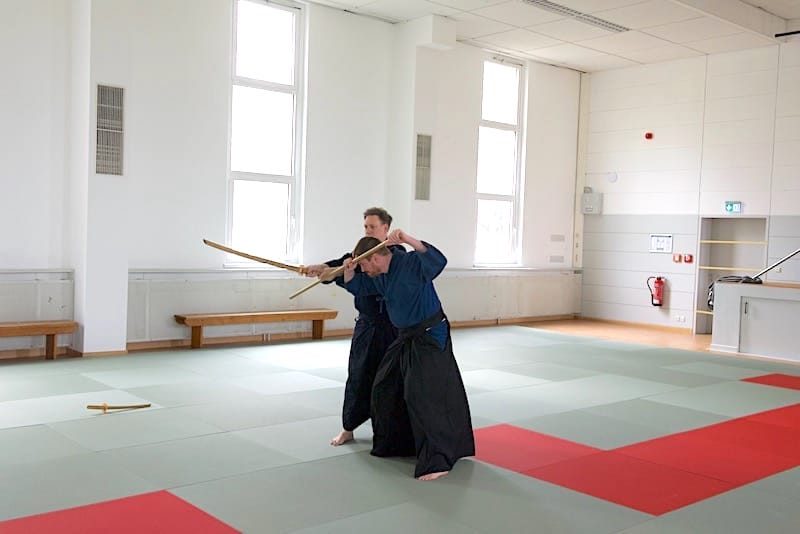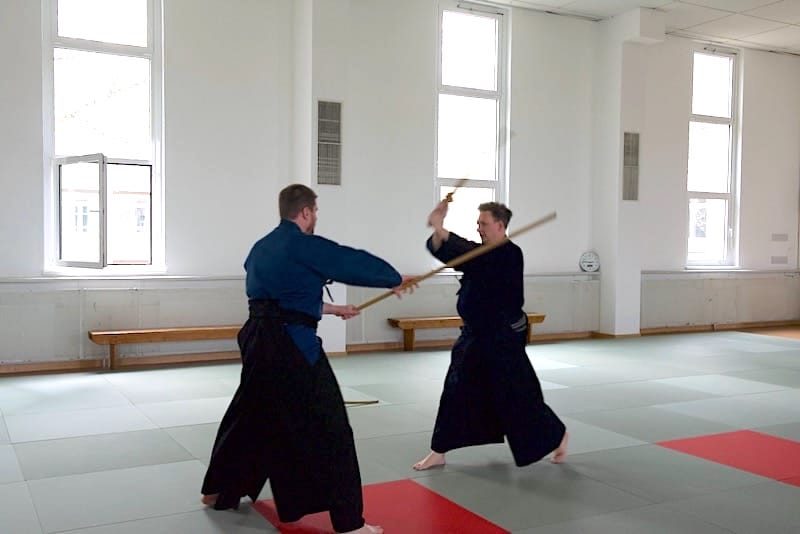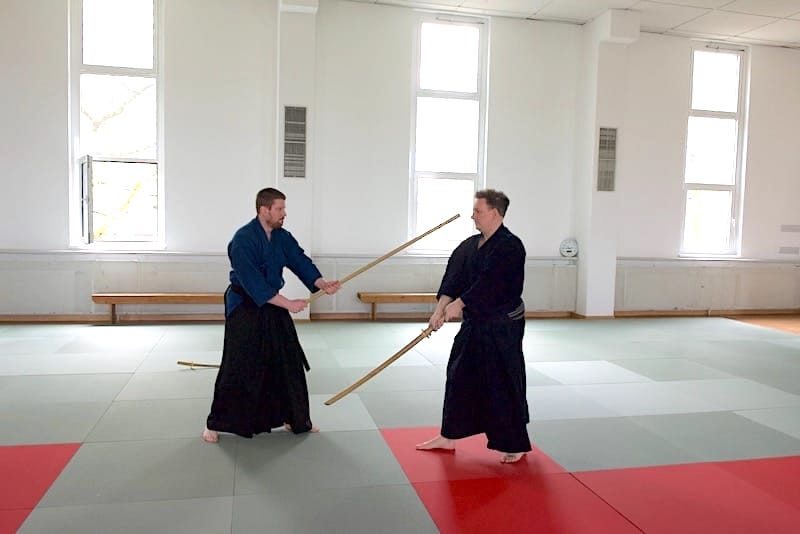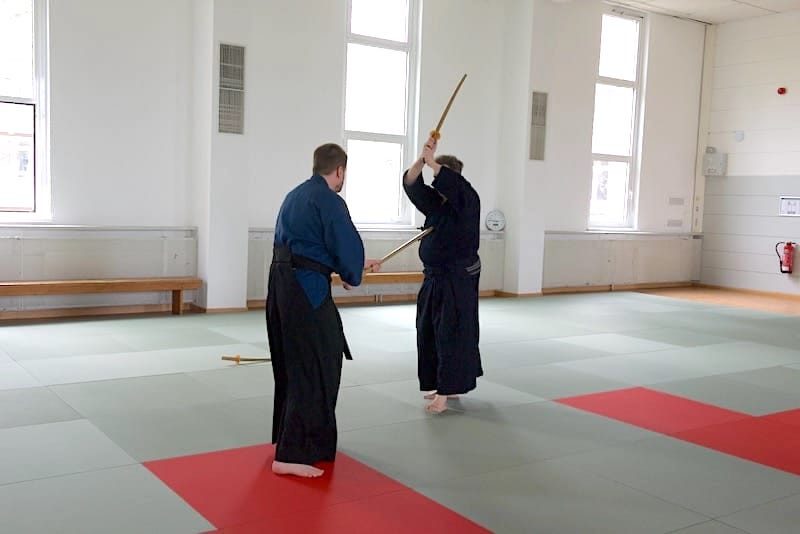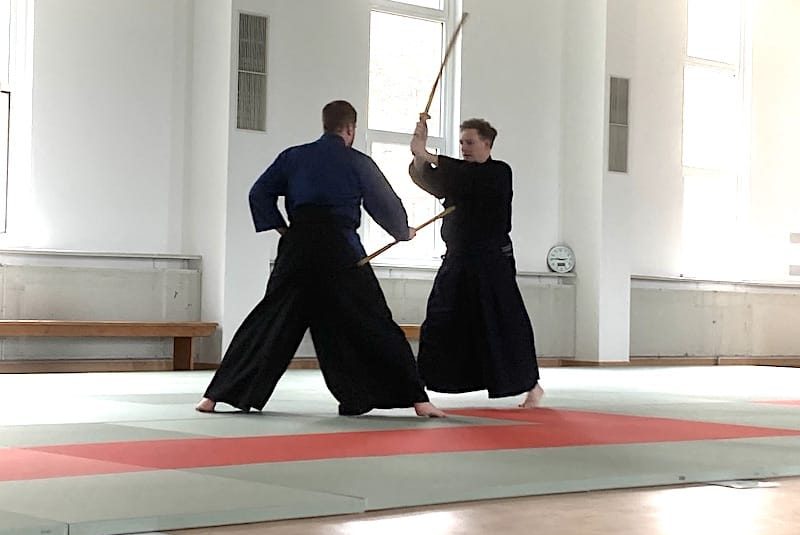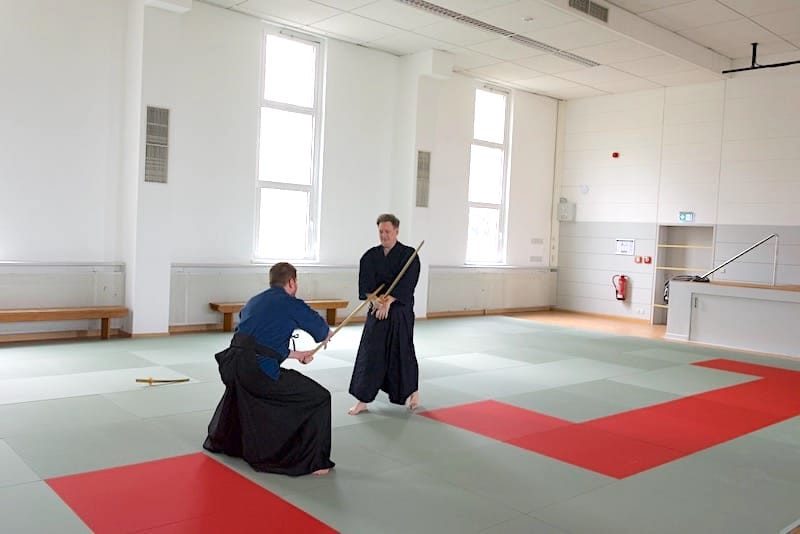Jōdō - "The way of the stick"
What is Jōdō?
This ancient martial art of the samurai is originally called Shintō Musō-ryū (神道夢想流) and belongs to the schools (Koryu) of Japan where it was practised by the warriors (bushi).
The Shintō Musō-ryū uses the jo, a stick of approx. 128 cm as its main weapon against the sword. The jo has one decisive advantage over the sword in that it is longer and more flexible.
The main exercises are kihon (basic exercises), uchikome (striking exercises) and katas. There are no competitions.
Jōdō has been a fixture in the PSV since the mid-Nineties.
Origin of Jōdō
Jōdō originated at the beginning of the 17th century. The founder, Musō Gonnosuke Katsukichi, was a samurai who trained at the Tenshin Shōden Katori Shintō Ryū and also received his teacher's licence there.
The origins of Jōdō are shrouded in legend. According to lore, Musō Gonnosuke went to Edo (Tokyo) at the beginning of the 17th century, where he crossed blades with numerous famous swordsmen.
Test of strength with Miyamoto Musashi
One day he met Miyamoto Musashi, probably the most famous swordsman of all time in Japanese history. Musashi had never lost a fight and Gonnosuke also had to bow to Musashi's Jujidome technique (blocking the opponent's sword by crossing the small and the big sword).
History of the Jo
After this defeat, Gonnusuke wandered the country with the aim of acquiring more prowess so that one day he could defeat Musashi's Jujidome. In Chikuzen province, he went to a town now known as Dazaifu in Fukuoka Prefecture on Kyūshū Island. There he retreated for 37 days to the shrine of Kamado on Mount Hōmen.
One night, a heavenly messenger appeared to him in a dream and said: "Find the solar plexus with a round stick!" Inspired by this message, Gonnosuke developed a new weapon. It was a simple stick that was about 30 cm longer than the sword. The total length of the stick was 128 cm (4 Shaku, 2 Sun, 1 Bu), the diameter 26 mm (8 Bu). These measurements are still valid today. The jo was born.
Development of the Jo Techniques
Now Gonnosuke began to develop suitable techniques for the jo. He profited greatly from the experience he had gained in numerous martial arts, such as thrusting techniques from the spear (yari), techniques from the halberd (naginata), striking techniques from the big stick (Bō) and from the sword (tachi). These different techniques eventually gave rise to jojutsu, which later became Jōdō.
Another encounter with Musashi
Afterwards, Gonnosuke is said to have gone on the road again to compete against Musashi's jujidome with his new techniques. There are different versions of the outcome of the fight, one saying that Gonnusuke inflicted the only ever defeat on Musashi, another that the fight ended in a tie.
Jōdō in modern times
Around the middle of the 20th century, jojutsu changed into Jōdō. Some of the techniques used in jojutsu, which were strongly oriented towards real combat, were somewhat toned down, but this does not mean that Jōdō is completely without danger. Nowadays, Jōdō is practised as kata (form). These are given sequences, but they are executed as realistically as possible. Each strike, both on the sword and stick side, must be executed in a manner as if it would hit the opponent. This means that if you are not concentrating, you may well get struck by the other party. Concentration is therefore a top priority. In total, 66 kata are taught, both on the stick and on the sword side.
In addition, 12 kata Kenjutsu (sword against sword) and 12 kata Tanjo (smaller stick against the sword) are taught. In addition, 12 kata kenjutsu (sword against sword) and 12 kata tanjo (smaller stick against sword) were studied in Shintō Musō-ryū, today as it was in the early days of the school. People still train in the style of this traditional school today. My friend Pascal Krieger from Switzerland and I came into contact with this traditional school when we went to Japan in 1969 to train Judō. At that time, Jōdō was largely unknown in Europe. Only gradually, and with the support of the internet, did this martial art find more and more followers across Europe and around the world. The grand master at the time was Shimizu Takaji Sensei, who warmly welcomed a small number of foreigners to his Dōjo. This was not a given, because at that time you could only join on recommendation. Just as warmly, of course, we welcome all those who are interested in traditional Japanese martial arts.
Teaching Jōdō
Jodo is mainly taught through partner kata. For us, kata are not fictitious fights, but a training opportunity to convey content. In the kata there are two roles Uchidachi (打太刀), the giver and most often the teacher and Shidachi (受太刀), the taker and student. Uchidachi is the sword side for us. If the sword side is not good, the Jo side cannot learn properly.
!!! Diese Zeile nicht ändern oder löschen – wird für das Untermenü benötigt !!!

